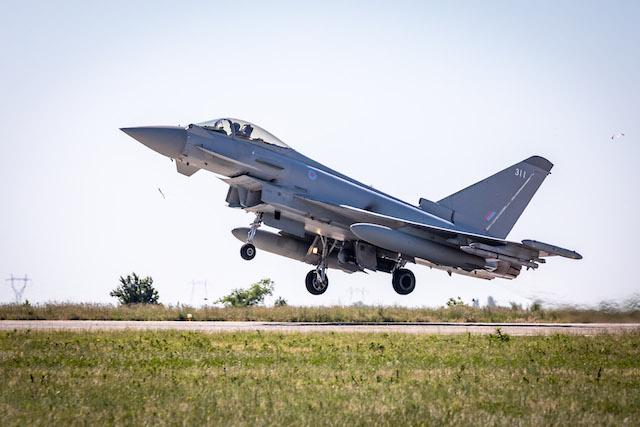
An RAF Typhoon takes off from a main operating base.
Credit: UK Royal Air Force
The UK Royal Air Force (RAF) plans to demonstrate soon that Eurofighter Typhoon FGR4s and Lockheed Martin F-35Bs can operate from roads as part of a distributed operations strategy, a senior commander told Aviation Week on June 13. The demonstrations are expected to take place within the next year...
Subscription Required
Road Operations Planned For RAF Typhoons, F-35Bs is published in Aerospace Daily & Defense Report, an Aviation Week Intelligence Network (AWIN) Market Briefing and is included with your AWIN membership.
Already a member of AWIN or subscribe to Aerospace Daily & Defense Report through your company? Login with your existing email and password.
Not a member? Learn how you can access the market intelligence and data you need to stay abreast of what's happening in the aerospace and defense community.





